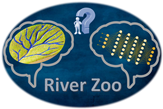Data Mining & Exploration
We make science discovery happen
Welcome to the River Zoo Project!

Main goal of this project is to perform a
statistical evaluation of the classification of terrestrial
and extraterrestrial drainage networks by human experts.
The idea is to analyze the degree of reliability of class
assignment to drainage samples, driven by user expert
decisions, taken just by looking at their image and choosing
the right pattern type.
This initiative arose from the published
research: Donadio, Brescia, Riccardo et al. 2020, "A
novel approach to the classification of terrestrial
drainage networks based on deep learning and preliminary
results on solar system bodies", published by Scientific
Reports (Nature Research).
The article is available online.
In this context, the project has a specific role to provide
a reliable ground truth for supervised learning
classification purposes.
This initiative is supported by:
Public Survey
All Experts/Scientists interested in the field are kindly encouraged to participate to this project, by landing on the RiverZoo questionnaire and provide answers.
Your help as an
Expert/Scientist is important. Please, take a time to give
you contribution!
![]()
Click the banner below to
participate to the River Zoo survey
For each image, the user can select one or
more class types, among those specified in the form. There
are 131 drainage network examples from Earth, 23 from Mars
and 2 from Titan.
We will collect all answers and provide publicly their
related statistical analysis. The names of the
participants will remain confidential!
Material
Anyone is welcome to use all tools, code
and materials, listed below, for their own work.
![]() In publications
and/or presentations reporting any kind of
activities/results done/obtained through these resources,
we request that the authors explicitly cite the River Zoo
project, by including this website link and the reference
Donadio, Brescia, Riccardo et al. (2021), "A novel approach to the
classification of terrestrial drainage networks based
on deep learning and preliminary results on solar
system bodies", Scientific Reports (Nature
Research), 11, 5875
In publications
and/or presentations reporting any kind of
activities/results done/obtained through these resources,
we request that the authors explicitly cite the River Zoo
project, by including this website link and the reference
Donadio, Brescia, Riccardo et al. (2021), "A novel approach to the
classification of terrestrial drainage networks based
on deep learning and preliminary results on solar
system bodies", Scientific Reports (Nature
Research), 11, 5875
- Available related material:
- Drainage Networks Reference List
- Earth original drainage network images
- Earth reduced drainage network images
- Mars and Titan original drainage network images
- Mars and Titan reduced drainage network images
- Python code for drainage network
images data preparation
- Python code for drainage network
images classification (CNN examples)



